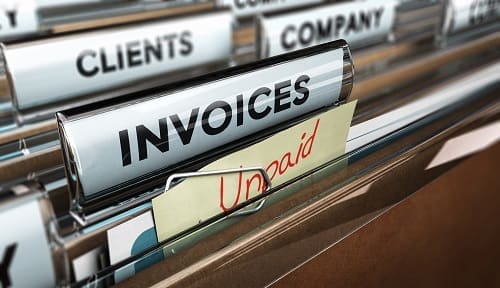
Small-business owners need of working capital often turn to merchant cash advances (MCAs) to fill the gap. Given their popularity and the way the terms are presented, it’s easy to think that they’re a simple and cost-effective way to get a quick cash injection, but all too often business owners get far more than they bargained for and are tied into this costly way to borrow before they realize it probably wasn’t the best solution for their needs.
Below, we’ll break down what makes a merchant cash advance look attractive to small-business owners, how it works, and explore some alternatives, so it’s easier to see how it stacks up and determine if an MCA is the right choice for you.
What’s a Merchant Cash Advance?
Sometimes referred to as a business cash advance, a merchant cash advance involves selling your company’s future receivables to a third party. More often than not, the MCA is provided by the company that processes a business’ credit card transactions, so the lender already knows how much the business is earning and can scrape their repayment and fees off the top of the business’ future earnings fairly easily.
That said, an MCA is not really a loan, which gives the company funding the deal more wiggle room in the fees it charges and how it behaves in general.
How Are the Fees of Merchant Cash Advances Calculated?
MCAs don’t use traditional interest calculations. Instead, they measure using something known as a multiplier. Understanding how it works is the key to knowing how much you’re really paying for your cash advance.
Sample MCA Calculations
As a small-business owner being told your multiplier is going to be somewhere between 1.1 and 1.5, it’s easy to think that’s an interest rate because that’s what you’re accustomed to. It’s not. It’s what your principal amount will be multiplied by to calculate the fees of your advance. Let’s break it down.
Payback Amount = Advance Amount x Multiplier
Let’s say you get an advance of $50,000 and your multiplier is: 1.25. The calculation is 50,000 x 1.25= 62,500. The total payback amount is $62,500.
Cost of Advance = Total Payback Amount – Advance Amount
Continuing with the numbers above, the calculation is: 62,500 – 50,000 = 12,500. The cost of advance is $12,500.
Percentage Cost = Cost of Advance / Advance Amount
Following along with the same numbers, the calculation here is: 12,500 / 50,000 = 0.25. The MCA percentage cost is 25 percent.
Annualized Interest Rate = (Percentage Cost x Days in a Year) / Days to Repay
Continuing with the example, and assuming the business owner expects to pay the balance off in three months, the calculation is: (0.25 x 365) / 90 = 1.01. In simplified terms, we’ve just discovered this MCA has the equivalent of over 100 percent annualized interest rate.
What Are the Benefits of Merchant Cash Advances?
As mentioned earlier, MCAs look good on the surface and can be tempting to small-business owners for a number of reasons.
1. They’re Easy to Get
You could almost liken an MCA to what payday loans are for the consumer market. The MCA company doesn’t do a whole lot of digging into your history or credit. Their decision is largely based on the revenue they see coming in through your recent credit card transactions. That means businesses without a strong credit history and time in business can still qualify for funding this way, even if they’re denied business loans and lines of credit.
2. They’re Fast
Because they’re not traditional loans, there’s far less red tape with MCAs. Businesses can often get approved within a day or two, and the money is transferred into their bank account right away, just like the payments they earn through credit card transactions are.
3. They’re Flexible
Oftentimes, there are large variances in how much a business can have advanced and in the amount that gets scraped off their future earnings. For example, a business might be able to get anywhere between a few thousand dollars or up to hundreds of thousands of dollars and the amount being scraped off the top (known as a holdback) could range from 10 to 20 percent of each future transaction until the balance is paid.
Some are set up to work more like lines of credit, too. For example, a business might be approved for a $50,000 advance. When they pay off $10,000, they can request another $10,000 advance.
Naturally, the terms offered will vary from one MCA company to the next and will fluctuate based on the terms a business selects, so it’s important to do some homework before accepting an offer.
Where Do Merchant Cash Advances Fall Short?
Most small-business owners only hear about the benefits before signing up, but it’s the areas in which they can fall short that cause trouble down the line.
1. Merchant Cash Advances Aren’t Always Covered by Usury Laws
As explained earlier, MCAs are not loans, so they’re not subject to the same laws as loans are. One area of importance is the interest rates. Whereas traditional loans have a legally mandated interest rate cap, MCAs can and often do cost exponentially more than loans.
2. Flat Fees Are Hard to Assess
Traditional loans are subject to the Truth in Lending Act (TILA), which generally requires lenders to tell borrowers their annual percentage rate (APR) in plain terms. By law, they have to clearly explain what the total costs are, including fees, ensuring borrowers know and can compare various financial products with ease. MCAs are not loans, so they’re not subject to TILA and may not tell you what your APR is or how much you’ll pay in a straightforward way. You’ll have to do the calculations for yourself. This is in addition to performing the multiplier calculations as shown earlier.
3. The Fast Repayment Schedule Can be Punishing
When you take out a loan and pay it off quickly, you’ll normally pay less due to reduced interest costs. Because MCAs charge fees, not interest, you don’t usually get a price break for paying it off faster. In addition to this, the amount being scraped off the top is based on the percentage you agreed upon, which means you pay more when you earn more.
4. Double Dipping Can Trap You in a Debt Spiral
Let’s say you’re barely getting by because of a business lull, you take out an MCA to cover operating expenses, and you agree to a 25 percent holdback. Going forward, you’ll only get to keep 75 percent of your earnings, which may or may not be enough to cover operating expenses, especially if your business lull continues. This is a common situation for small-business owners, who are then left to find another working capital solution.
5. An MCA is Expensive
Some MCAs start at around a 15 percent APR. However, others climb well over 100 percent. It can be one of the most expensive ways to get working capital.
6. MCAs Can Be Difficult to Understand
Between the multiplier, APR, holdbacks, and other terms used with MCAs, you practically have to learn a whole different language just to make it through a contract. The calculations involved in sorting out your total cost make it even more difficult to understand an MCA.
7. Fluctuating Daily Payments
Because of the way holdbacks work, you may have a busy day or week in which you pay back a higher dollar funding amount than you would with a slower day or week. Unless your credit card charges are static or relatively stable from one period to the next, it’s very difficult to tell when you’ll pay off the advance or how much you’ll pay during any given period.
8. MCA Funding is Typically Based on Credit Card Receipts
One of the reasons it’s easier to get an MCA is because qualification is based on your credit card transactions. This is a double-edged sword if you have other sources of income. For example, you may not get all the funds you need if your customers pay by check or cash.
9. You Really Need Long-Term Capital
Although this was touched on earlier when we discussed debt spirals, it bears repeating. An MCA can only work for you if you’re certain you only need the cash for a short period of time. Otherwise, an MCA can be very damaging to your long-term needs.
Evaluating the True Cost of MCA Loans and Their Alternatives for Small Businesses
As small business owners navigate the complex terrain of financing options, understanding the true cost of a Merchant Cash Advance (MCA) compared to alternative funding sources becomes paramount. While MCAs are quick funding solutions, especially for businesses with limited access to traditional bank loans, the overall financial implications can be substantial. When calculating the cost of MCA loans, it’s clear that the convenience of easy approval and immediate cash flow can come at a price, often marked by high APRs and a repayment structure that challenges your business’s long-term financial health. In contrast, exploring alternatives to merchant cash advances, such as term loans, business lines of credit, or even invoice factoring, could bring to light financing options that better align with your company’s repayment capabilities and growth objectives. These alternatives not only offer a diverse range of repayment terms and interest rates but also encourage small business owners to compare the total borrowing cost, ensuring a more informed decision that supports sustainable business operations. By meticulously assessing each financing option’s true cost and suitability, businesses stand a better chance of selecting a solution that complements their financial strategy without compromising their future revenue or cash flow stability.
What Happens if You Default on a Merchant Cash Advance?
Penalties for defaulting on an MCA vary depending on the terms of your contract. On a standard contract, most small-business owners can expect to pay additional fees during the next cycle, though some contracts include a stipulation that the MCA company can permanently raise the rate or increase the holdback going forward.
It’s also common for MCA companies to report to credit bureaus, which can damage your personal credit score and make it even harder to qualify for traditional bank loans in the future.
Sometimes, MCA providers require a personal guarantee from the business owner too. In these cases, a business owner who defaults may be putting their personal assets, such as their home, in jeopardy if they were used as collateral.
Merchant Cash Advance Alternatives for Small Businesses
No matter your situation, there’s usually a way to secure funding for your business. A few of the most common financing options are covered below.
1. Long-Term Small Business Loan
Long-term small business loans are what most people look for when they have a funding shortfall. You can usually get a large lump sum payment and then pay it back with interest over a longer repayment term – usually over a period of years. It’s one of the more affordable ways to borrow, but lenders have strict criteria for small business borrowers, such as having a good credit score, strong cash flow, and years in business.
2. Short-Term Small Business Loan
Short-term small business loans are ideal for businesses that need a quick cash injection to cope with an emergency or cash flow gap. They’re more expensive than traditional long-term loans, so they work best if you can pay the balance off quickly, though they usually have a fixed interest rate, which can make a short-term business loan easier to manage.
3. Small Business Line of Credit
A small business line of credit will typically have a higher interest rate than a long-term loan, but the business owner can draw from the line as the balance is paid down. It works like a credit card. However, the criteria for qualifying is similar to that of a long-term loan.
4. Invoice factoring
Invoice factoring or receivable financing involves selling your B2B invoices to a third party. There’s no debt to pay back and no ongoing charges like you’d experience with an MCA. You simply select which invoices to factor and the factoring company provides payment for them at a discount right away which will free up your working capital needs. Then, the factoring company collects payment from the customer. This MCA alternative is ideal for businesses that don’t qualify for loans and that are put off by the high fees other options come with.
Top Alternatives to Merchant Cash Advances
Thankfully, even if you’re exploring MCAs because you don’t qualify for traditional lending options, various companies may still be able to help.
PayPal Working Capital
In the modern era, many small-business owners rely on online POS providers rather than traditional credit card processors. Companies such as PayPal, Stripe, and Square all have various programs that allow business owners to tap into working capital based on the amount they process through their company. PayPal Working Capital, for example, works similarly to an MCA, but terms are a bit different. The business pays less if the balance is paid off early and the repayment terms are often more flexible than MCA terms.
OnDeck
Small-business owners that find themselves looking for funding on a regular basis may want to check out OnDeck, which offers pricing breaks for repeat borrowers. The company provides fixed-fee financing with APRs that generally range from 9 to 99 percent.
Charter Capital
Businesses that work in the B2B niche and invoice their clients should check out Charter Capital. As a factoring company, Charter Capital purchases invoices from their clients and can even provide same-day funding so that you have cash flow to pay things like business expenses. There’s an easy application process, no repayment amount and no debt spiral to get caught in. Businesses also benefit from reduced collections costs, as they’re no longer responsible for chasing down payments.
Get a Free Invoice Factoring Rate Quote
If it sounds like invoice factoring may work for your small business, get the information you need to make the best decision. Request a complimentary rate quote from Charter Capital.







